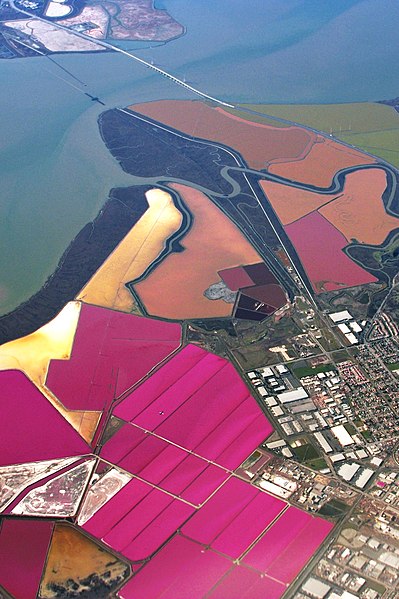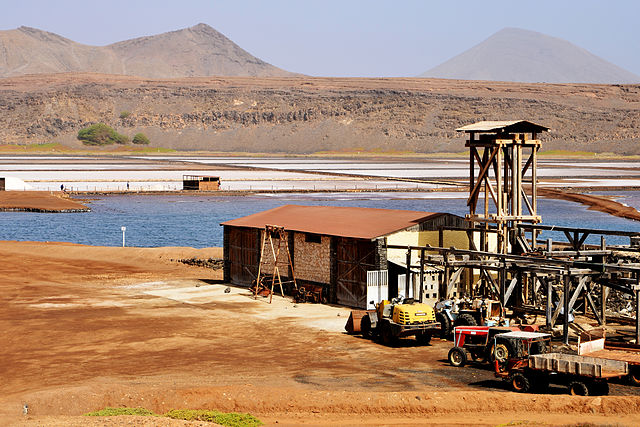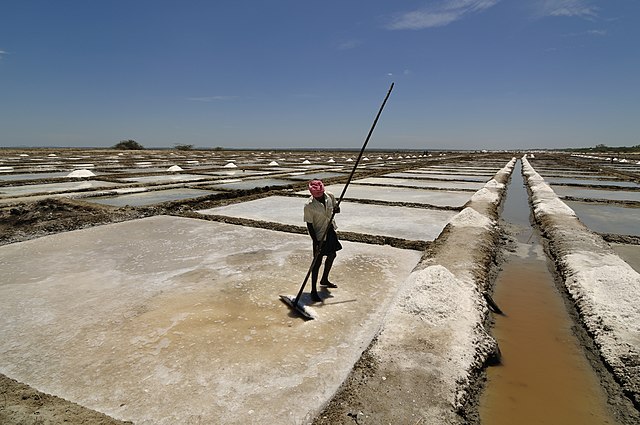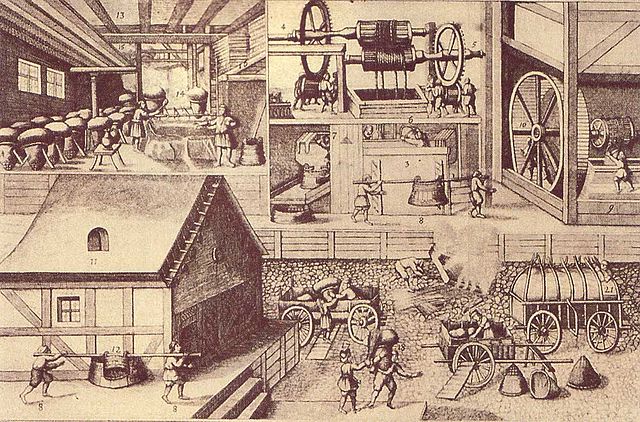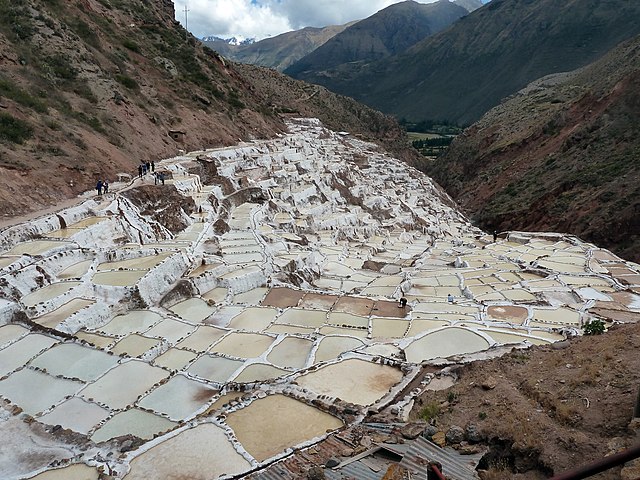A salt evaporation pond is a shallow artificial salt pan designed to extract salts from sea water or other brines. The salt pans are shallow and expansive, allowing sunlight to penetrate and reach the seawater. Natural salt pans are formed through geologic processes, where evaporating water leaves behind salt deposits. Some salt evaporation ponds are only slightly modified from their natural version, such as the ponds on Great Inagua in the Bahamas, or the ponds in Jasiira, a few kilometres south of Mogadishu, where seawater is trapped and left to evaporate in the sun.
Salt evaporation pond in Manaure, La Guajira, Colombia
San Francisco Bay salt ponds
Natural salt evaporation ponds at Pedra de Lume, Sal island, Cape Verde
A salt pan worker in a salt evaporation pond in Tamil Nadu, India.
In common usage, salt is a mineral composed primarily of sodium chloride (NaCl). When used in food, especially in granulated form, it is more formally called table salt. In the form of a natural crystalline mineral, salt is also known as rock salt or halite. Salt is essential for life in general, and saltiness is one of the basic human tastes. Salt is one of the oldest and most ubiquitous food seasonings, and is known to uniformly improve the taste perception of food, including otherwise unpalatable food. Salting, brining, and pickling are also ancient and important methods of food preservation.
Rock salt (halite)
Salt production in Halle, Saxony-Anhalt (1670)
Ponds near Maras, Peru, fed from a mineral spring and used for salt production since pre-Inca times
SEM image of a grain of table salt


